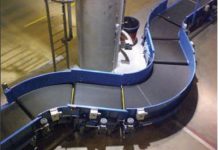
As Mcity at the University of Michigan in Ann Arbor concluded its autonomous shuttle pilot program with no major incidents in 2019, most riders said they trust the driverless technology and were satisfied with their experience.
Results of the project’s consumer survey, conducted in partnership with Troy-based global market research firm J.D. Power, showed that 86 percent of riders said they trusted the technology after riding in it, as did 67 percent of nonriders surveyed.
Mcity, a public-private connected and automated vehicle research center led by U-M, outlined the full results of the consumer research in a white paper, which can be accessed here.
The white paper also examines the safety and operating protocols that led to a safe and successful deployment. Extensive safety conductor training, well-defined safety protocols, and daily communication among Mcity staff, the safety conductors, and the Navya vehicle manufacturer support team served an oversight role of the automated system and helped maintain a safety record free of any major incidents or injuries.
The Mcity driverless shuttle launched in June 2018 as consumer trust in automated vehicles was declining in the wake of two fatal crashes involving partially automated vehicles in Arizona and California. When Mcity’s research wrapped up in December 2019, consumer sentiment nationally remained weak, according to separate surveys published earlier this year by AAA and J.D. Power.
“That the Mcity Driverless Shuttle research project resulted in high levels of consumer satisfaction and trust among riders, in spite of declining satisfaction with AVs nationally, underscores the importance of robust preparation and oversight to ensure a safe deployment that will build consumer confidence,” says Huei Peng, director of Mcity and the Roger L. McCarthy Professor of Mechanical Engineering at U-M. “Without that, we will never achieve the full potential of driverless vehicles to improve traffic safety, cut fuel consumption and increase mobility for those with limited transportation options.”
The landscape has changed since the Mcity driverless shuttle launched, with many more shuttle services operating across the country, including in Phoenix, where Waymo is running its program without an onboard safety driver.
The Mcity project helped pave the way for other shuttle services by working with the National Highway Transportation Safety Administration and the U.S. Department of Justice to secure acceptance of making a driverless shuttle available as a transportation option to the U-M community.
Other key findings of Mcity’s consumer research include:
- 97 percent of survey respondents were aware that the shuttle was fully automated. The majority rode the shuttle one time, and it replaced mostly pedestrian transportation (47 percent) with most rides taken during afternoon hours (63 percent).
- Interest in AVs and general curiosity were primary factors for riders. Removing the hassle of finding parking and improving current mobility methods were predicted to be more relevant to respondents, but, in fact, were negligible.
- Regardless of their feedback for improving the shuttle, riders were very satisfied with their driverless shuttle experience with 75 percent saying they would be willing to ride the driverless shuttle again.
- A vast majority of riders, 86 percent, stated post-ride that they trusted the Mcity driverless shuttle; as did 67 percent of nonriders surveyed, including pedestrians, bicyclists, and other vehicle drivers.
- Riders’ and nonriders’ thoughts regarding personal self-driving vehicles were positively impacted by the shuttle, generating more interest in the technology as a result of riding or seeing it in operation.
Insights that Mcity gained that can be applied to future driverless shuttle deployments at U-M or elsewhere include:
- Provide a practical transportation alternative that happens to be automated, not the other way around.
- Consider speed, number of stops and convenience to riders. Slow speeds and limited on-route stops did not make the Mcity driverless shuttle a practical alternative to riders’ daily transportation challenges.
- Establish robust safety protocols, operator training, and communication.
- Support the service with outreach and education to key audiences to engage the community and encourage ridership.
“Researching consumer interaction with the Mcity driverless shuttle emphasized the critical importance that experience brings to building trust with automated vehicle technology,” says Kristin Kolodge, executive director of driver interaction and human machine interface at J.D. Power. “The skepticism and hesitancy consumers felt prior to riding the shuttle was diminished by many through a positive experience.”
The Mcity driverless shuttle’s route covered a roughly one-mile round-trip route contained to U-M’s North Campus Research Complex. The shuttle carried students, faculty, and staff to the complex from more distant parking and provided easy access to the U-M/Ann Arbor Area Transportation Authority bus stop at Hubbard and Hayward streets.
At the conclusion of the pilot program, U-M donated one of two shuttles used for the project to The Henry Ford in Dearborn.











